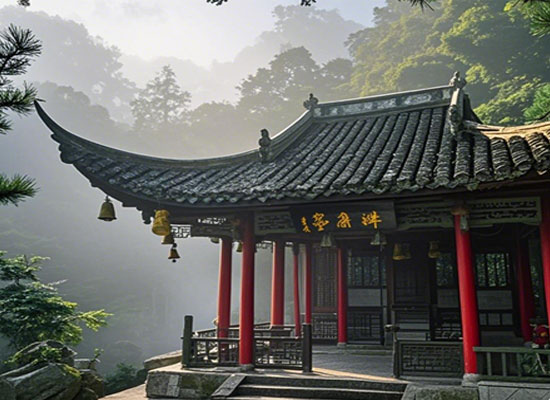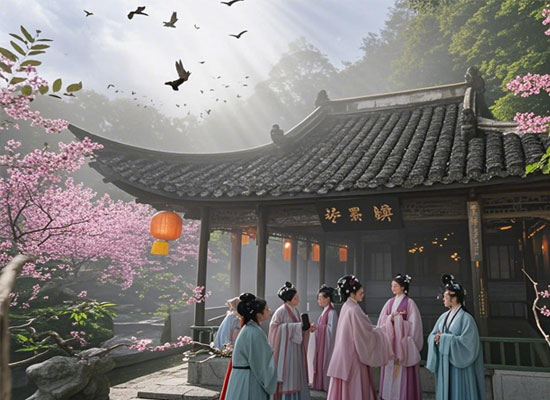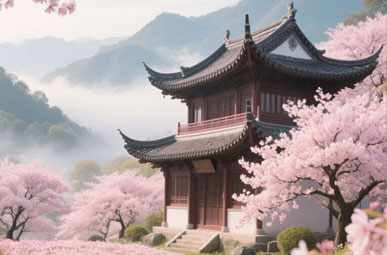Zuiweng Pavilion, a world-renowned ancient landmark, stands at the foot of Langya Mountain in Chuzhou City, Anhui Province, China. It is known as one of the “Four Famous Pavilions of China”, along with the Tao Ran Pavilion in Beijing, the Ai Evening Pavilion in Changsha, and the Huxin Pavilion in Hangzhou. Although this Jiangnan-style pavilion is small in size, it has become a sacred place for countless tourists with its profound historical and cultural heritage.

The Birth of the Millennium Pavilion
In 1045 A.D. (the fifth year of the Northern Song Dynasty’s Qingli), Ouyang Xiu was relegated to Chuzhou as a governor. Here, he became close friends with the monk Zhixian of Langya Temple. In order to make it easier to climb the mountain and enjoy the scenery, Zhixian specially built a small pavilion at the foot of the mountain. Ouyang Xiu wrote the famous essay “Records of the Drunken Master Pavilion” to record the time he spent drinking and enjoying himself with his friends here. In the article, “Taishou (as Ouyang Xiu called himself) drank here with his guests, not drinking much but getting drunk easily, and he was the oldest, so he called himself Drunken Master”, which is the origin of the name “Drunken Master Pavilion”.

The Miracle of Words
Zuiweng Pavilion itself is not a grand building, the geographical location is not superior, but why can become the “world’s first pavilion”? The answer lies in Ouyang Xiu’s more than 400-word “Drunken Master Pavilion Records”. There is an old Chinese saying: “A good article can make a place famous, and a beautiful scenery can be more beautiful because of the article”. It is this masterpiece that has made this ordinary pavilion famous after 800 years of wind and rain. Now around the drunken master pavilion development of garden landscape group, I am afraid that even Ouyang Xiu himself can not imagine.

The unbreakable bond between the literati and the landscape
In Chinese culture, famous landscapes are often closely linked to the stories of literati:
- The Yellow Crane Tower has the poems of Roy Cui and Li Bai.
- The Tengwang Pavilion is famous for Wang Bo’s Preface to the Tengwang Pavilion.
- The Yueyang Tower is famous for Fan Zhongyan’s “Records of the Yueyang Tower”.
Zuiweng Pavilion is just such a cultural symbol that is forever tied to Ouyang Xiu’s name.
Ouyang Xiu’s Wisdom of Life
Although he was relegated three times, the Northern Song literary leader always kept an open mind. During his relegation to Chuzhou, the court did not make things too difficult for him, allowing him to enjoy the landscape. He wrote in the “The Drunken Master’s Pavilion Records” in the “drunken master’s intention is not wine” of the ancient famous line, is actually to use wine to express the love of nature and landscape. This wisdom of finding pleasure in difficult situations still inspires people today.

When you visit Langya Mountain today, you can still feel the unique “slightly drunk” atmosphere. Half of this intoxication comes from the local wine, but more from the wonderful experience of the blend of landscape and humanity. Strolling along the green stone paths, stroking the traces of time on the pavilion pillars, it is as if you can hear the laughter of the scholars and writers of 900 years ago.

Immortal Cultural Heritage
The Story of Drunken Master’s Pavilion is not only a beautiful piece of writing, but also contains a profound philosophy of life. In the text, “the joy of the landscape, the heart and the wine” and other golden lines show the spirit of Ouyang Xiu’s happiness with the people. If you want to really understand this classic, you may want to come to Chuzhou to see for yourself – stand in front of the Zuiweng Pavilion, feel the cultural dialog through space and time, and experience the landscape under the pen of the “Drunken Master”.


